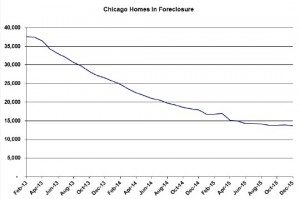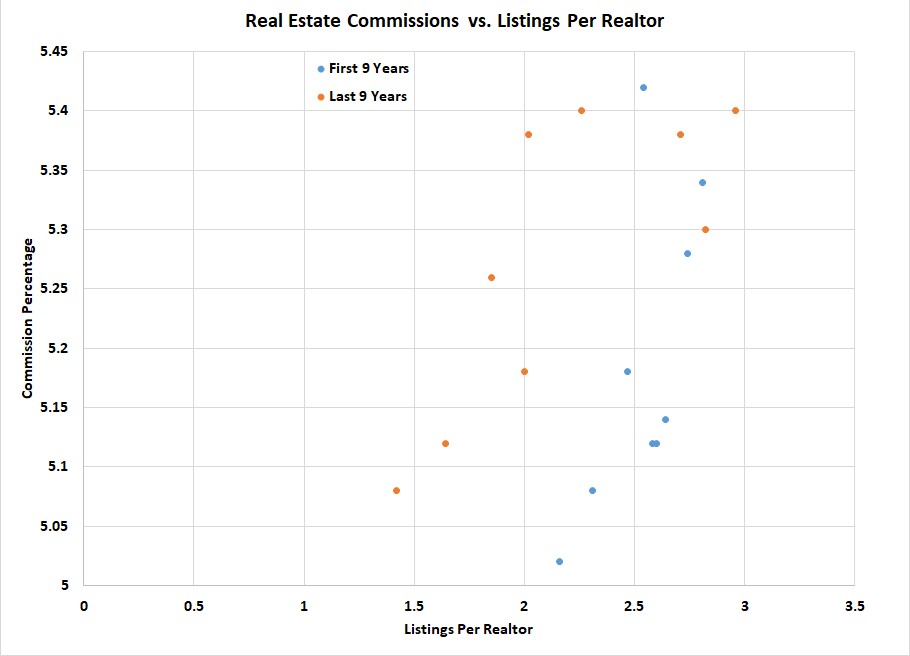RealTrends is a residential real estate brokerage industry publishing and consulting company that analyzes various industry trends. Not quite a year ago they ran an article on the impact of inventory, brokerage models, and referral fees on real estate commissions. One of their more compelling arguments was their claim that lower listing inventory resulted in greater competition among realtors and therefore lower commissions.
It was compelling until I looked at the their data closer. If you go to their article and click on the link for their exhibit 1 you will see a graph that makes no sense. I think whoever created it doesn’t know how to graph separate variables because they added apples and oranges together. So I took their data and played with it, concluding that a simple time series like they were attempting would never allow you to see if there was the “strong correlation” that they claimed.
Instead I created a scatter diagram so that I could clearly see if there was a pattern between the two variables. I then noticed that there appeared to be two different patterns that might reflect a change occurring over time so I split the data into the first 9 years and the second 9 years which I graphed below. The blue dots are the first 9 years and the orange dots the last 9 years of the time period from 2000 – 2017.
First, I did see some vague evidence of what they were claiming. Commissions did tend to be lower when there were fewer homes available for sale but the impact on commissions across the range of inventory was fairly small – less than 1/2 % point out of approximately 5.25%. I dunno. That seems small to me.
However, notice that the orange dots from the more recent time period are shifted up (or left depending on your perspective). What that means is that in the more recent time period real estate commissions appear to be higher for a given level of inventory or the same for a lower level of inventory than during the earlier time period – i.e. commissions have stayed the same or risen despite a drop in the number of listings per realtor. It’s rather shocking that, despite all the new brokerage business models out there, consumers apparently don’t know how to use Google to find discount realtors.
It’s also interesting to note just how few listings there are per realtor in general. That’s because of the huge number of casual realtors in the business that do few, if any, deals. Basically they just rely upon the kindness of friends and relatives to give them business. And that’s why there is so much incompetence in the real estate industry.
RealTrends also tried to make two other observations about trends driving down real estate commissions but I didn’t find either one to be particularly interesting or believable. First, they noted that there is a proliferation of real estate brokerages that don’t police the commissions their agents charge. However, as I pointed out above there isn’t much evidence that real estate commissions are actually falling over time so scratch that one.
They also argued that the preponderance of referral fees is eating into commissions. However, while that might be something that impacts real estate brokerages it’s not something that home buyers and sellers are aware of.
#RealEstateCommissions
Gary Lucido is the President of Lucid Realty, the Chicago area’s full service real estate brokerage that offers home buyer rebates and discount commissions. If you want to keep up to date on the Chicago real estate market or get an insider’s view of the seamy underbelly of the real estate industry you can Subscribe to Getting Real by Email using the form below. Please be sure to verify your email address when you receive the verification notice.

